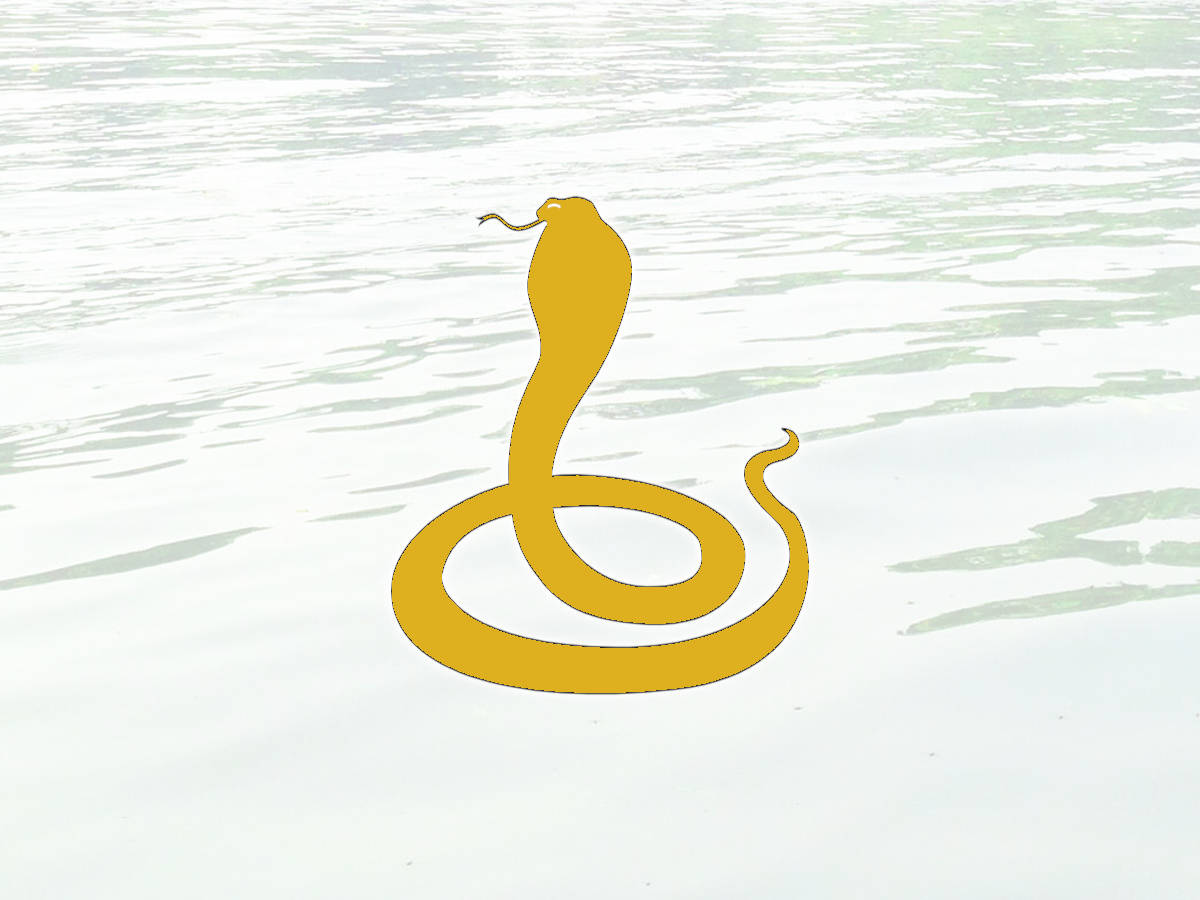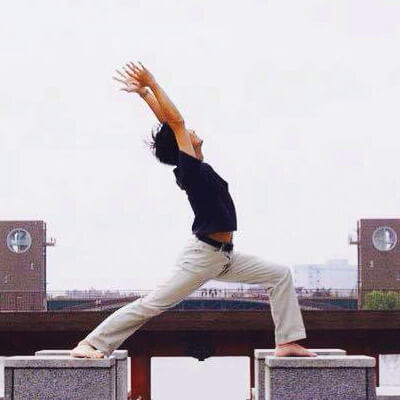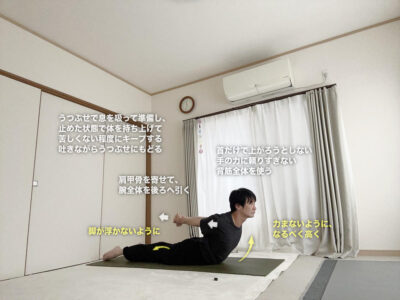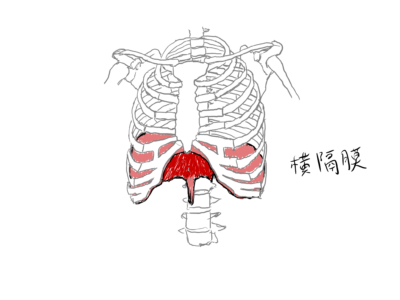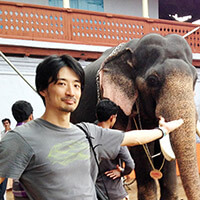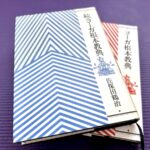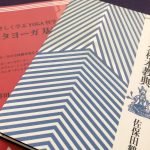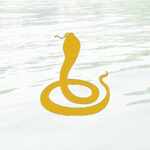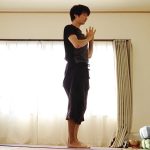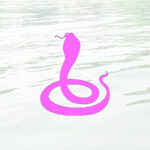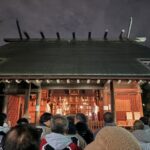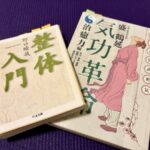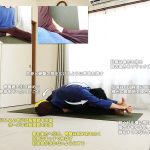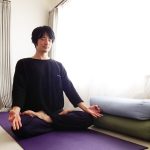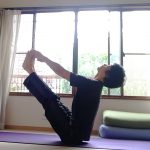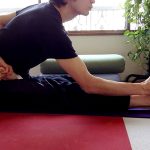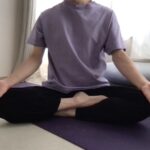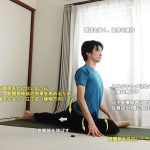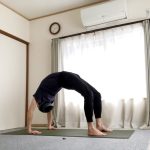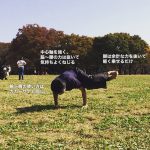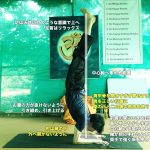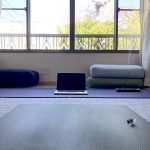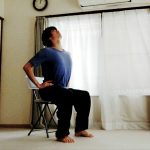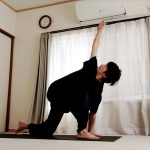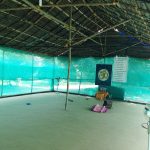「クンダリニー・タントラ/スワミ・サティヤナンダ・サラスワティ著」を読み進めていく形で、クンダリーニヨガ(クンダリニーヨーガ)の概要を紹介していく連載記事です。
「Kundalini Tantra 英語版 ペーパーバック」 Swami Satyananda Saraswati (著)
「Kundalini Tantra 英語版 Kindle」 Swami Satyananda Saraswati (著)
今回は、第3章の8節、アナーハタチャクラ覚醒の行法のやり方に関する部分です。
アナーハタチャクラ自体の詳しい説明は、以下の記事を参考にしてください。
参考:アナーハタチャクラの解説
以下、引用部分の太字強調は私が個人的に重要と思ったところを示したものです。
この記事の目次
アナーハタチャクラ覚醒の流れ
Anahata chakra can be awakened very simply through the practice of ajapa japa. Japa means “repetition” and ajapa is the repetition of a mantra until it ultimately becomes the spontaneous form of your conscious awareness.
アナーハタチャクラは、「アジャパ・ジャパ」というシンプルな行法で覚醒できるといいます。「ジャパ」は「繰り返し」を意味し、「アジャパ」はマントラを最終的に意識の自発的な形になるまで繰り返すことであると説明されています。
この説明だけではわかりにくいですが、後で説明されます。
Another important practice in anahata awakening is bhramari pranayama. Although it is called a pranayama, bhramari is actually a meditational practice.
アナーハタチャクラ覚醒のための重要な行法として、ブラーマリープラーナーヤーマも示されています。
プラーナーヤーマ(一般的には「呼吸法」を示す)という名前がついていますが、他のプラーナーヤーマとは異なり、直接的にプラーナをコントロールするものではなく、これは瞑想的な行法であるといいます。
様々な文献によれば、心臓のセンターは「絶え間なく続く音(ナーダ音)のセンター」あるいは「蜂の洞窟」と呼ばれており、ブラーマリープラーナーヤーマでは自分でハミングする音を使って、蜂の羽音を再現します。
これによって、思考・感情の深いリラックスが導かれ、心臓の不調にとても効果があると説明されています。
Anahata chakra is the center of bhakti or devotion. It is awakened in accordance with the degree of devotion to guru, God, or personal deity, in whatever form or non-form one may visualize or understand the spiritual intelligence of the universe.
アナーハタチャクラはバクティ(献身)のセンターでもあり、宇宙の霊的知性を視覚化または理解することができるかどうかに関わらず、師匠や神や個人的な信仰対象(有形・無形によらず)への献身によって覚醒するといいます。
すべてのヨーガの実践は、特に信頼できる師匠の祝福のもとになされるとき、自動的に霊的ハート(アナーハタチャクラ)の中の献身性を覚醒させるといいます。
バクティヨーガに関する素晴らしい文献はたくさんあり、献身の道を行くための助けを与えてくれるといいます。全ての聖者、ヨーギー、バクタ(バクティヨーガ実践者)たちの伝記もまた役立ちます。サティヤナンダ氏の別著「A Systematic Course in the Ancient Tantric Techniques of Yoga and Kriya」もまた、バクティヨーガ実践のための素晴らしい解説を与えてくれるといいます(この本、バクティヨーガのことだけでなくヨーガ全般について書かれていて、文字も多い上に900ページ以上あります…)。
Practise these techniques for awakening anahata chakra for one month and then proceed to those for awakening vishuddhi chakra. All the practices given for awakening ajna, mooladhara, swadhisthana and manipura chakras can be done if sufficient time is available. If not, then we suggest that you do a few selected techniques from each chakra sadhana as follows:
ajna – trataka and shambhavi mudra
mooladhara – moola bandha and nasikagra mudra
swadhisthana – chakra and kshetram location, vajroli or sahajoli
manipura – chakra and kshetram location, uddiyana bandha and nauli (if possible).
アナーハタチャクラ覚醒の行法は1ヶ月間行い、その後にヴィシュッディチャクラの覚醒へ向かいます。
これまでに行ったアージュニャーチャクラ、ムーラダーラチャクラ、スワディシュターナチャクラ、マニプーラチャクラの行法も、時間が十分にあるのであれば続けるべしと指示されています。もし時間がないのであれば、以下の行法を中心に行うと良いと示されています。
- アージュニャーチャクラ:トラータカ、シャーンバヴィー・ムドラー
- ムーラダーラチャクラ:ムーラバンダ、ナシカグラ・ムドラー(ドリシュティ)
- スワディシュターナチャクラ:チャクラとクシェートラムの位置を把握する行、ヴァジローリームドラー(男性)・サハジョーリームドラー(女性)
- マニプーラチャクラ:チャクラとクシェートラムの位置を把握する行、ウディヤナバンダ、ナウリ(可能ならば)
アナーハタチャクラ覚醒の準備に適したアーサナ
Asanas that help to purify anahata chakra include: shalabhasana, dhanurasana, matsyasana, gomukhasana, kandharasana, baddha padmasana, sarpasana, supta vajrasana and sirshasana.
アナーハタチャクラを浄化するアーサナとして、シャラバーサナ、ダヌラーサナ、マツヤーサナ、ゴームカーサナ、カンダラーサナ、バッダパドマーサナ、サルパーサナ、スプタヴァジュラーサナ、シルシャーサナが役立つといいます。
サルパーサナは現代ヨガではあまり一般的に使われない名称ですが、シャラバーサナのバリエーションとして行われることの多い形です。
スプタヴァジュラーサナは、仰向けの割座に近い形ですが、サティヤナンダ氏の本ではマツヤーサナのように上半身を反らせる形をとっています。
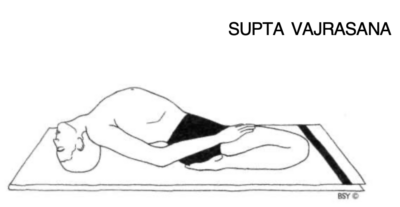
(画像出典:Asana Pranayama Mudra Bandha)
行法1:チャクラとクシェートラムの位置を把握する
Stand sideways in front of a mirror. Put one finger of one hand on the center of the chest. Here you will find anahata kshetram. Put one finger of the other hand on the spine, directly behind the kshetram; this is anahata chakra.
鏡の前に横向きに立ち、指を胸の真ん中に置きます。そこがアナーハタチャクラのクシェートラムです。
もう片方の手の指を、そのまっすぐ裏側の背骨に置きます。そこにアナーハタチャクラがあるといいます。
両方の指を置いたまま坐り、その指で1分間しっかり押してそれらの場所を確かめます。
指を離した後、押していた感覚が残っている場所に意識を集中しながら、頭の中で「アナーハタ、アナーハタ…」と数分間唱えます。
行法2:アナーハタチャクラの浄化
Then become aware of your breath moving in and out of the anahata region. As the chest expands, feel that the breath flows in through the center of the chest and back to anahata chakra. As the chest contracts, feel that the breath flows from anahata chakra in the spine, through the center of the chest and out of the body.
快適な坐法で坐ります。力まないように、背中をまっすぐに保ちます。目は閉じておきます。
胸の広がりと収縮を感じながら、数分間ゆっくり深く呼吸をします。
その後、アナーハタの領域から呼吸をしているようにイメージします。胸が広がるとき、息が胸の真ん中から入り、そのまままっすぐ背骨の中にあるアナーハタチャクラへ到達するようにイメージします。胸が収縮するとき、背骨の中のアナーハタチャクラから胸の真ん中を通って息が外へ出ていくようにイメージします。
これを頭の中で「アナーハタ、アナーハタ…」と唱えながら、数分間続けます。
行法3:ブラーマリープラーナーヤーマ
The humming breath
瞑想に適した坐法で坐ります。完全にリラックスできるように数分間、姿勢を調整します。
耳の穴を人差し指でふさぎます。顔は前を向き、背骨はできるだけまっすぐ保ちます。目を閉じて、全身をリラックスします。
実践の間、上下の歯を少しだけ離して唇は閉じておきます。これによって、声の振動がより直接的に脳の中で経験されるといいます。
Breathe in slowly and deeply. Then, while breathing out, produce a humming sound. The sound should be smooth and continuous for the full duration of exhalation.
ゆっくり深く呼吸します。吐くときに、ハミングの音を出します。
音は滑らかで途切れないように、息を吐いている間ずっと続くようにします。大きい音を出す必要はありません。
重要なのは、外に音を出すというよりも、その音が頭の中で響いているのを感じることです。
吐く息はゆっくり一定にコントロールします。息を吐ききったところで音は止まり、再び息を吸って、繰り返します。
目は閉じて耳は人差し指でふさいだまま、体は力まないように完全にリラックスして、5〜10分間続けます。
以前ブラーマリープラーナーヤーマのやり方の記事を書きましたが、そこでは手で目と耳を両方ふさいで行うやり方を紹介しました。
参考:ブラーマリー・プラーナーヤーマ(ハミングビーブレス・蜂の呼吸法)の効果・やり方
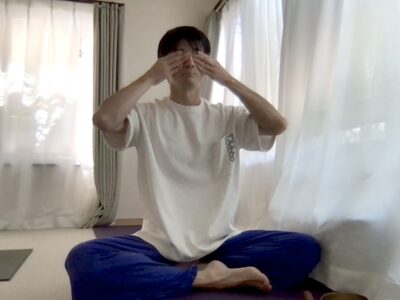
行法4:アジャパ・ジャパ瞑想
ここで紹介されているのは、SO-HAM(ソーハム)瞑想のやり方のひとつです。以下の記事で紹介しました。
参考:SO-HAM(ソーハム)瞑想のやり方・効果・意味、マントラの音に関する考察

Do not try to control the breath, just become a witness of the natural breathing process. Now become aware that the sound of inhalation is so and the sound of exhalation is ham. The natural mantra of the breath is so-ham.
シッダーサナ(男性向け)またはシッダヨーニアーサナ(女性向け)または快適な坐法で坐ります。数分間、目を閉じてリラックスします。
自然な呼吸の出入りに気づきを向けます。呼吸をコントロールしようとせず、ただただ観察します。
息を吸うときの音「SO」、息を吐くときの音「HAM」に意識を向けます。自然の呼吸とともに「SO-HAM(ソーハム)」というマントラを繰り返している、ということに気づきを向けます。
一瞬たりとも、この呼吸とマントラから意識を離さないようにします。湧き上がる思考や感情にも巻き込まれないようにし、湧き上がるのも消えるのも自然に起こるがままにします。
With inspiration, this psychic breath rises from the navel to the throat and its mantra is so. With expiration, the psychic breath descends from the throat back to the navel. Its mantra is ham.
そして霊的な呼吸が、体の前側、臍と喉の間で流れるのを感じます。吸う息とともにその流れは臍から喉へ上がっていき、「SO」のマントラが響きます。吐く息とともに、その流れは喉から臍へ下っていき「HAM」のマントラが響きます。
気づきをその道筋に向けながら、SO-HAMの音を感じ続けます。呼吸は完全にリラックスした状態で続けます。
Note: Ajapa japa can be practised at any time, but it should be done for 5 to 10 minutes per day – either in the morning sadhana session or at night, immediately before sleep. It should be continued for at least one month.
アジャパ・ジャパの実践は、朝でも夜でも、寝る前にでも、いつでも行うことができ、5〜10分程度は毎日行うようにし、少なくとも1ヶ月は続けるべし、と指示されています。
行法5:ハートの空間に入る瞑想
喉を通る息と心臓の空間をイメージするというシンプルな瞑想法ですが、とても丁寧に解説されています。
Be aware of the diaphragm – the rising and falling muscular floor separating the chest and lungs above from the abdominal organs below.
シッダーサナまたは快適な坐法で坐ります。目を閉じて、しばらく完全にリラックスします。
喉のあたりへ意識を集中し、喉を通る息にしばらく気づきを向けます。
それから、喉から入って下の方へ向かう息にも気づきを向けます。出ていく息には意識を向けず、ただ喉から入ってくる息の方にだけ意識を向けます。
そして、横隔膜のネットワークの中へと流れ込んでいく息に気づきを向けます。胸や肺と、その下にある内臓との間を隔てている、横隔膜へと気づきを向けます。
吸う息ごとに、気が腹部のほうへ少し落ちて圧を与え、それが臍のまわりと膨らませます。同時に肺も胸いっぱいに広がります。
腹部を収縮することによって、横隔膜が上がって吐く息が生じ、肺が空になっていくことに気づきを向けます。横隔膜への気づきを、しばらく続けます。
Now, also become aware of the akasha, the space within which the diaphragm is operating.
そして、横隔膜が働いている領域の中の空間「アーカーシャ」へ気づきを向けます。アーカーシャについては2章の記事に少し出てきました。物質的な空間というよりも、純粋性が住む微細な空間といった説明をされます。
参考:「クンダリニー・タントラ」を読む【34】第2章 7節:アナーハタチャクラ
入ってくる息によってこの空間が満たされるイメージをします。出ていく息は気にせず、ただ満たされていくイメージをします。これは広大な心臓の空間アーカーシャへ気づきをむけるための、単なる基礎となるものです。(「vast 広大な」と言っているように、これは単に物質的な空間を意味するものではないということです)
It is contracting and expanding with the rhythm of the natural breath. Breath is only the basis. The process of filling up is only the basis. Go on to comprehend the whole space. Then you are aware of the space alone.
呼吸は自然な・自発的なリズムで行い、長くしたり短くしたり、深くしたり浅くしたり、速くしたり遅くしたりといった意図的な操作を行わないようにして続けます。そこに意識を向けるのではなく、アーカーシャへの意識を向けるのが重要です。
呼吸はその単なる基礎となるものであって、ここで集中する対象ではないということです。呼吸を使ってその空間を満たすようにイメージすることで、まずその空間を認識し、その後は空間だけに意識を向けるように(呼吸は意識的に行わず、自然に行われるように)していきます。
If the awareness of the expansion and contraction of the heart space is constant and stabilized, after some time, many visions and experiences will manifest there.
心臓の空間の広がりと収縮への気づきが安定した後、しばらくすると、多くのビジョンと経験がそこから現れてくるといいます。
自分でそれを視覚化やイメージしようとせず、それが自然と湧き上がるようにし、意識は心臓の空間への集中を続けます。
そのビジョンは、湖と青い蓮華であるといいます。
心臓の空間の広がりと収縮を感じることができるなら、そこに気づきを向け続けます。
それが難しいようであれば、息がその空間を満たすイメージを続けます。これが第1段階で、第2段階ではその空間が自然な呼吸のリズムで広がりと収縮を繰り返すのを直接的に感じます。(呼吸によって満たすという意図的な感じではなく、自然に起こるように)
第3段階は、自然に湧き出てきたイメージの青い蓮華と静かな湖面に気づきを向けます。
気づきを心臓の空間から引き上げて、喉を通る自然な息の出入りの流れに気づきを向けます。5〜10分ほど、その出入りの流れに意識を向けます。
Omを3回唱えます。その音が、自然に深いところから発せられるようにします。数分間、その内部からの音の振動を聴きます。
そして姿勢を解き、目を開けます。
次記事:「クンダリニー・タントラ」を読む【46】第3章 9節:ヴィシュッディチャクラの覚醒方法
前記事:「クンダリニー・タントラ」を読む【44】第3章 7節:マニプーラチャクラの覚醒方法
参考文献
「Kundalini Tantra 英語版 ペーパーバック」 Swami Satyananda Saraswati (著)
「Kundalini Tantra 英語版 Kindle」 Swami Satyananda Saraswati (著)
「クンダリニー」ゴーピ・クリシュナ (著), 中島巌 (翻訳)
「Asana Pranayama Mudra Bandha 英語版」Swami Satyananda Saraswati (著)

